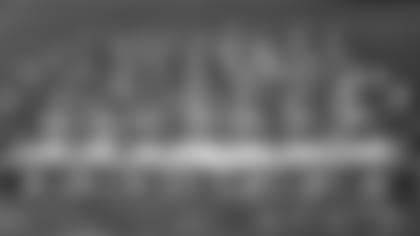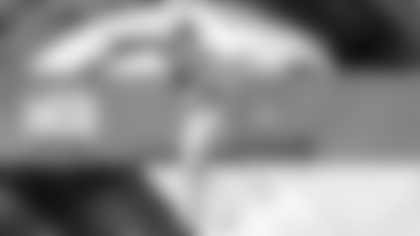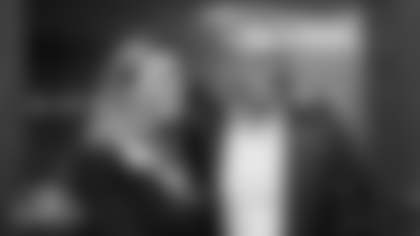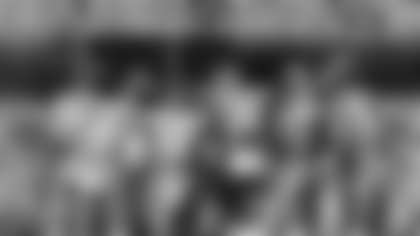There is very little to match the excitement that a new NFL season brings.
And in Denver, with the Broncos, our fan base is in a frenzy at this time. New owners, a new coach and, of course, Russell Wilson.
But a couple of things stay the same.
The Broncos will have sellout crowds at Empower Field at Mile High, as they have every year since they officially became part of the NFL in 1970. This, by the way, includes the 2020 season, as the Broncos still sold every ticket that they were allowed to sell, according to the NFL offices.
And the team still has their fabled and famous orange and blue colors.
Earlier this week, it was announced that Breckenridge Distillery is releasing limited-edition bottles to commemorate 60 years since that branding was created.
Naturally, we wish Breckenridge Whiskey and the Broncos every success with this partnership.
But how did the orange and blue come to be?
The Broncos began in 1960 as members of the American Football League, and in the beginning they were the poster children that defined a poor franchise, from player acquisitions to the stadium to the colors.
In fact, the best thing one could say about the first colors is that they were unique. The Broncos' colors were mustard and brown, and the reason is the uniforms were used, purchased secondhand from a defunct college all-star game called the Copper Bowl (copper, hence the copper-like mustard).
And the socks, as most fans are aware, were notable for their legendary mustard-and-brown vertical stripes.
So how the heck did they get from a laughingstock uniform to one of the game's most iconic color combinations?
That all happened starting in 1962.
After their second straight dismal season, general manager Dean Griffing and head coach Frank Filchock were fired and the team hired Jack Faulkner in a dual role as GM and head coach. Faulkner was a career football man, and his role in Broncos history is very much understated.
Of course, most fans today were not following the team in the 1960s (I was, however), so they simply do not know.
When Faulkner took over, the team not only wore mustard and brown, but the Broncos had no playbook. That is not to say the playbook was small or outdated. One did not exist at all.
Faulkner was serious about his new position and brought everything he had into it, including his own background, which was entirely steeped in Ohio football. He created a playbook and guided the team to its first .500 season, a 7-7 record in 1962.
Faulkner was named the AFL Coach of the Year for his work on the field in that first season, but I submit that his greatest accomplishment for the Broncos was creating the orange and blue color scheme.
He knew the colors had to change.
The Broncos, for a period, flirted internally with green, but the word was that the New York Titans were about to become the New York Jets and play in green, so that idea was abandoned. No way a team in the Rocky Mountains was going to win a battle for colors with a team from New York.
But Faulkner, a native of Youngstown, Ohio who had come to the Broncos from the San Diego Chargers, where he coached under the legendary Sid Gillman, had previously coached under Gillman at the University of Cincinnati for six seasons.
And of course, as an Ohio native, he was totally familiar with the Cleveland Browns. Not only did the Browns wear orange, but they were virtually the only pro franchise in any sport to wear orange at that time.
So Faulkner chose orange, with blue trim, for the Broncos.
New uniforms were created, and he burned what was left of the old mustard and brown uniforms at a public bonfire at the Broncos' annual scrimmage that ended training camp at the Colorado School of Mines in Golden.
The logo on the helmet was designed by Bob Bowie of The Denver Post and was the origin of the more familiar cartoon horse with a grizzled football player riding it.
At that time the relationships between teams and their local sportswriters was very close, and there was a time in American journalism when sportswriters also had to be cartoonists. Way, way back when, newspapers relied as much (or more) on cartoons as on photography. Bowie was from a different generation, and his career began in the era of World War II.
So the Broncos' uniforms became orange and blue in 1962.
The helmet originally was orange and had a blue horse on it, not the white horse with which there is familiarity. This was a fact that I personally questioned until I looked at real old film and made a trip to the archives of the Denver Public Library to check it out. The horse was blue in '62.
But in those days, all sports events were still televised in black and white, and on black and white television, the logo looked like a hunk of mud on the helmet.
So without any announcement, press release or fanfare, the Broncos switched to a white horse on the orange helmet. The change was made for the sixth game of the season (Denver played Oakland in back-to-back games in weeks five and six), and in Week 6, the horse was white.
There were a couple of changes to the jersey design regarding stripes, but the colors orange and blue were constants from 1962 forward.
The next big change came in 1967, when Lou Saban was hired to the position of general manager/head coach. Saban did not like the caricature horse. He found it silly and not as powerful as he desired.
But he could not find a logo that he liked, so while he changed the helmet color to blue, the Broncos played with nothing on the sides of their helmets in 1967.
It was the following year that Saban put the iconic "D with a snorting horse inside" logo on the sides of the helmets, and that remained the logo until the team's branding changed in 1997.
But no matter what, the colors orange and blue have become one with the Broncos.
Of course, the primary jersey color became a deep blue with the 1990s change, but we sometimes wore orange as an alternate color. After one of those home games in orange, Pat Bowlen wandered into my office to chat on a Monday morning.
I told him that while the team was beloved, something just was not quite right.
"Pat, the fans want us to wear orange jerseys," I finally said.
Then, the Broncos' future Hall of Fame owner replied, "OK. Let's switch to orange. Make the necessary calls internally and to the league and tell them we want to wear orange jerseys again, as soon as the league lets us."
And that brings us to today.
We have alternate uniforms, and no doubt will have future designs of such, but as Mr. B used to say regarding the national opinion of the Broncos, "We're that team that plays at altitude in the mountains, wears orange and blue, and wins most of the time!"
Hopefully that part goes on and on.















